Xiaqing Xu
Basket-based Softmax
Jan 23, 2022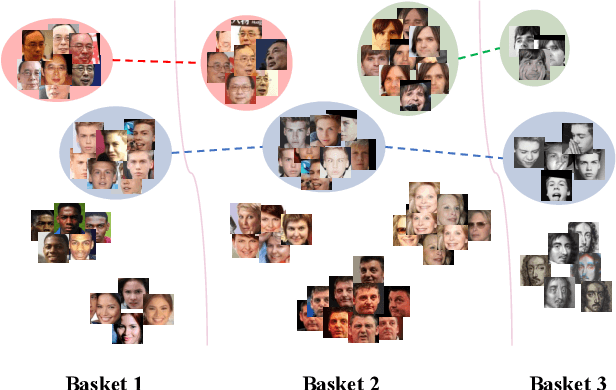

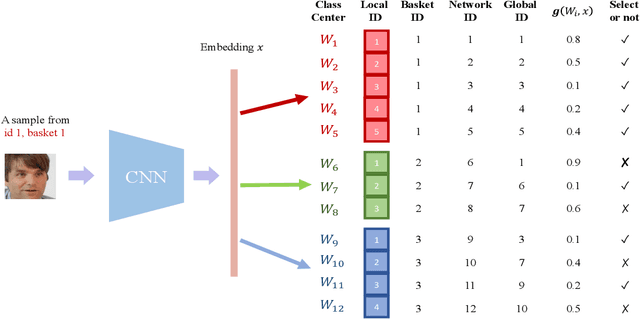
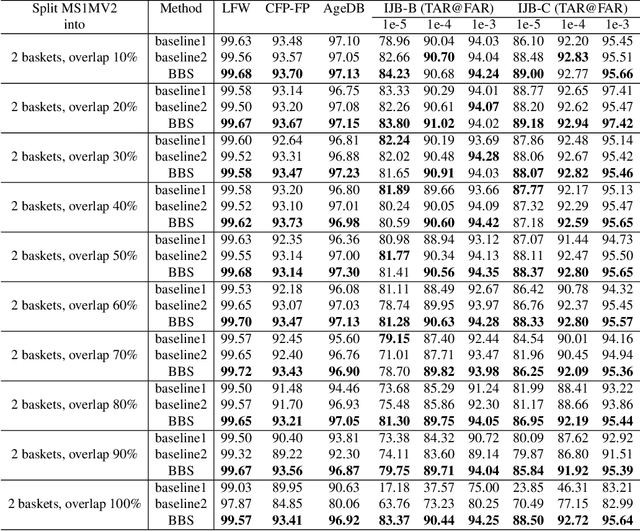
Abstract:Softmax-based losses have achieved state-of-the-art performances on various tasks such as face recognition and re-identification. However, these methods highly relied on clean datasets with global labels, which limits their usage in many real-world applications. An important reason is that merging and organizing datasets from various temporal and spatial scenarios is usually not realistic, as noisy labels can be introduced and exponential-increasing resources are required. To address this issue, we propose a novel mining-during-training strategy called Basket-based Softmax (BBS) as well as its parallel version to effectively train models on multiple datasets in an end-to-end fashion. Specifically, for each training sample, we simultaneously adopt similarity scores as the clue to mining negative classes from other datasets, and dynamically add them to assist the learning of discriminative features. Experimentally, we demonstrate the efficiency and superiority of the BBS on the tasks of face recognition and re-identification, with both simulated and real-world datasets.
PoseFace: Pose-Invariant Features and Pose-Adaptive Loss for Face Recognition
Jul 25, 2021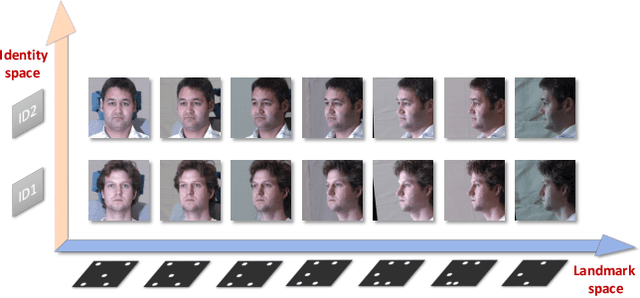

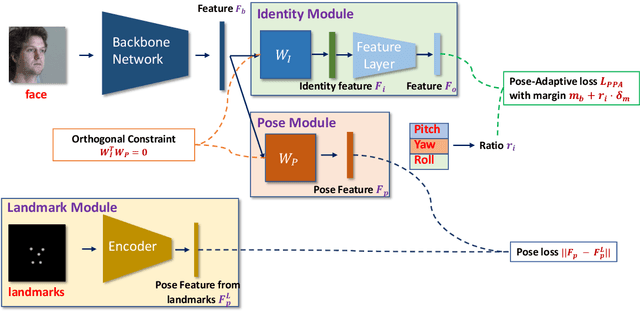

Abstract:Despite the great success achieved by deep learning methods in face recognition, severe performance drops are observed for large pose variations in unconstrained environments (e.g., in cases of surveillance and photo-tagging). To address it, current methods either deploy pose-specific models or frontalize faces by additional modules. Still, they ignore the fact that identity information should be consistent across poses and are not realizing the data imbalance between frontal and profile face images during training. In this paper, we propose an efficient PoseFace framework which utilizes the facial landmarks to disentangle the pose-invariant features and exploits a pose-adaptive loss to handle the imbalance issue adaptively. Extensive experimental results on the benchmarks of Multi-PIE, CFP, CPLFW and IJB have demonstrated the superiority of our method over the state-of-the-arts.
Searching for Alignment in Face Recognition
Feb 10, 2021



Abstract:A standard pipeline of current face recognition frameworks consists of four individual steps: locating a face with a rough bounding box and several fiducial landmarks, aligning the face image using a pre-defined template, extracting representations and comparing. Among them, face detection, landmark detection and representation learning have long been studied and a lot of works have been proposed. As an essential step with a significant impact on recognition performance, the alignment step has attracted little attention. In this paper, we first explore and highlight the effects of different alignment templates on face recognition. Then, for the first time, we try to search for the optimal template automatically. We construct a well-defined searching space by decomposing the template searching into the crop size and vertical shift, and propose an efficient method Face Alignment Policy Search (FAPS). Besides, a well-designed benchmark is proposed to evaluate the searched policy. Experiments on our proposed benchmark validate the effectiveness of our method to improve face recognition performance.
 Add to Chrome
Add to Chrome Add to Firefox
Add to Firefox Add to Edge
Add to Edge